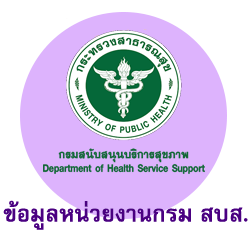COMMUNITY DEVELOPMENT FOR PARTICIPATORY HEALTH MANAGEMENET ACCORDING TO SUFFICIENTCY ECONOMY PHILOSOPHY IN NAN PROVINCE.
Keywords:
community health management, sufficiency economy philosophy, community participationAbstract
Health promotion and disease prevention are important for public health development. Which based on local communities and networks. Health promotion and disease control are difficult but sustainable. Strengthen community health is important for health promotion and disease control. The objectives of this study were to analyst the situation of community health, develop a model of community health management according to the sufficiency economy philosophy and evaluate the model. The study used a research and development. The study was conducted in 20 sub-districts in Nan province. The study were 2 years and 3 months operation during October 2017 - December 2019. There were 3 phase of operation : phase 1 studied the situation of community health management, phase 2 developed model, phase 3 knowledge management and empowerment. Descriptive statistics and Content analysis were used to analyze the data.
The study found that Situation of community health management in Nan province has a variety of health management programs with participation from various network partners in each area. There are many types of initiatives, starting with external organizations, from local organizations, and from communities. The participatory community health management model started from creating a common concept of people in the community by using self-reliance concepts and started from small group as health volunteers and community leaders. There were processes as follows : 1) Reviewed themself, set goals and issues together. 2) Built community team 3) Conducted activities to develop from best practice 4) Created community policy 5) Connected network in the area and outside the area 6) Summarizes lesson learn and evaluated together. The result made strong groups, strong community and reduced health risk factors. The results of the evaluation of the 4 component process showed that all sub-district (20 subdistrict) through evaluation of team and plans components. Activity components passed the criteria of 17 sub-districts (85.0 percent). Results component criteria passed the criteria of 16 sub-district (80.0 percent). As for the health management community criteria found that through the excellent level of 15 sub-districts (75.0%), good level 5 sub-districts (25.0%). Each sub-districts had self-development according to the context, lifestyle and culture. Keys success factors included : 1) the concept of sufficiency economy philosophy 2) using knowledge information 3) starting from a small groups 4) leadership of community leader 5) community policy 6) continuous activities and interactive through learning. 7) evaluation 8) motivating and appreciate the good practice.
Therefore, there should be development of health volunteer and community leaders to be the core of health community development by using the sufficiency economy philosophy as the basic of operations.
References
Anusonpanichakul, Thakoon. Nakpibal, Pinyapat. Suwannin, Wongteera. (2018). Successful of Small and Micro Community Enterprise Model in Thailand. Phetchabun Rajabhat Journal,20(1), 8-17. (in Thai).
Barry Checkoway, Amy Schulz, Marc Zimmeran,Barbara A. Israel. (1994). Health Education and Community Empowerment: Conceptualizing and Measuring Perceptions of Individual,Organizational, and Community Control.
Health Education Quarterly, 21(2), 149-170.Retrieved January 12, 2019, from https://deepblue.lib.umich.edu/bitstream/handle/2027.42/66559/10.1177_109019819402100203.pdf?sequence=2&isAllowed=y
Bheadnok, Chucheep. (2016). The promotion model of the elderly as the philosophy of sufficiency economy : Case in Bangtoey sub district, Samkhok district, Pathumthani province. Journal of Pathumthani University 8(1), 49-56. (in Thai).
Chitanon, Hathai. (1998). New health promotion. Planning Division, Department of Health,Ministry of Public Health. Nonthaburi :Planning Division, Department of Health,Ministry of Public Health. (in Thai).
Hunnirun, Pornsuk. Tornee, Songpol. Srimala, Rapeepat.(2016). Community health management by participation approach : a case study of Chachoengsao Province. VRU Research and Development Journal Humanities and
Social Science. 11(3), 159-168. (in Thai).
Juansang, Prakairung. Ruamsook, Nuchmann.KaenKann, Varathip. (n.d.). Health promotion model of the philosophy of sufficiency economy through student participation in Ubon Ratchathani Rajabhat University.
Faculty of Nursing Ubon Ratchathani Rajabhat University. (in Thai).
Ken Morrison, and Karen Hardee Jessica Ogden.(2014). Social capital to strengthen health policy and health systems. HEALTH POLICY AND PLANNING, 29, 1075–1085. Retrieved January 12, 2019, from https://watermark.silverchair.com/czt087.pdf?token=AQECAHi208BE49Ooan9kkhW_Ercy7Dm3ZL_9Cf3qfKAc485ysgAAAkEwggI9BgkqhkiG9w0BBwagggIuMIICKgIBADCCAiMGCSqGSIb3DQEHATAeBglghkgBZQMEAS4wEQQMfSbCyWOzHml9Hwh7AgEQgIIB9Lua8DPiJN8EWVvcBCI_dIbaAXhUlAgiHFLWUjZ-UNRZ_rUq
Laohasiriwong, Wongsa. Singhalerd, Rungsan.Cheulinfha, Sangad. (2015). The effectiveness of health developing village in rural MahaSarakham Province. Chopayom Journal,26(2), 177-193. (in Thai).
Marc A. Zimmerman, Douglas D. Perkins. (1995).Empowerment TheoIT, Research, and Application. American Journal of Community Psychology,, 23(5), 569-579. Retrieved January 12, 2019, from https://deepblue.lib.umich.edu/bitstream/handle/2027.42/117200/ajcpbf02506982.pdf?sequence=1&isAllowed=y
Maruean, Isaraphap. Chumsang, Chanphen. Pattra,Sakchai. (2013). KKU Journal for Public Health Research. 6(2), 136-144. (in Thai).
Office of the National Economic and Social Development Board, Prime Minister’s Office.The executive of National Economic and Social Development Plan 12th 2017-2021.Bangkok : Office of the National Economic and Social Development Board, Prime Minister’s Office. (in Thai).
Onsawat, Aruni. Buason, Rattana. Malarat, Anan.(2008). The Causal Model Development of the Factors Affecting the Success in Health Related Communities Network Management :A Mixed Method Approach. The Journal of Behavioral Science, 14(1), 151-165. (in Thai).
Phuphaibul, Rutja. Watanasak, Suriyapong.Jitramontree, Narirat. Apanuntikul, Manee.Youngpradith, Apa. Sinsuksai, Nittaya. et al.(2012). Development Process for Sufficiency Health in Community. Journal of Nursing Science & Health, 35(1), 28-38. (in Thai).
Primary Health Care Division, Department of Health Service Support. (2018). Guideline for Sub-district health Integration management.Department of Health Service Support,Ministry of Public Health : Nonthaburi. (in Thai)
Srisongkhram, Phimonphan. Kaikaew, Preeda. Kaewsawat, Supreecha. Ruangsuwan, Tassanu.(2015). Healthy Community Development:a Case Study of Krungching Sub–District in Nakhon Si Thammarat Province. Journal of Health Science , 24 (4), 660-669. (in Thai).
Yokanit, Punchita. Sungraksa, Narin. (2010). Lesson learned from learning community health care of Nong-Sarai Community, Phanomthuan, Khanchanaburi. Silpakorn Educational Journal,1(2), 132-140. (in Thai).
Downloads
Published
How to Cite
Issue
Section
License

This work is licensed under a Creative Commons Attribution-NonCommercial-NoDerivatives 4.0 International License.



